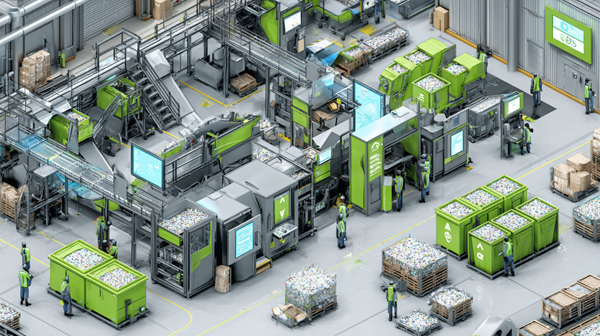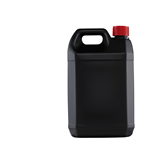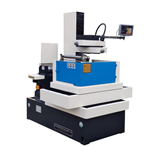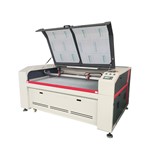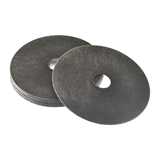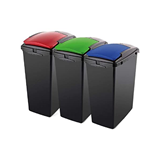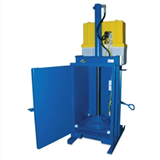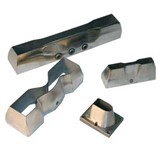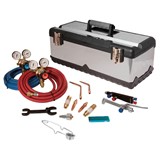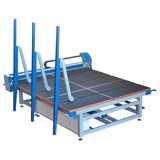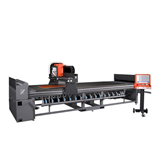Key Takeaways
- Waste is a cost, not just rubbish. Landfill levies in states like NSW and Victoria can exceed $160 per tonne. Reducing waste directly cuts your operational expenses and improves your bottom line.
- Smart bins are the starting point. Using IIoT sensors in your bins to monitor fill levels can optimise collection schedules, cutting transport costs by up to 40% and preventing overflows.
- AI-powered sorting is becoming accessible. New systems use cameras and AI to automatically identify and sort complex waste streams (like mixed plastics or e-waste), significantly increasing recycling rates and resource recovery.
- On-site compaction saves big. Investing in balers or compactors can reduce the volume of waste like cardboard or plastic by up to 90%, drastically cutting the number (and cost) of waste collection truck movements.
- Calculate the full ROI. Justify your investment in waste innovation by quantifying savings beyond landfill levies, including transport, recycling revenue, labour efficiency, and considering available grants or finance options.
- Compliance demands data. Australian environmental regulations require accurate tracking and reporting of waste. Modern waste management tech provides the data needed to demonstrate compliance and avoid penalties from bodies like the EPA.
Introduction: Turning trash into treasure
For Australian industrial businesses in late 2025, managing waste has shifted from a simple disposal task to a complex operational and financial challenge. Landfill space is shrinking, state government levies are relentlessly climbing, and stakeholders, from investors to customers, are demanding greater environmental accountability. According to the latest National Waste Report, Australia generates millions of tonnes of industrial waste annually, and the cost of managing it is a significant burden on businesses.
Simply sending everything to landfill is no longer a viable option, environmentally or economically. The good news is that a wave of innovation is transforming how we handle industrial waste. New technologies, driven by data analytics, automation, and a circular economy mindset, are making it possible to reduce waste, increase recycling, and even turn waste streams into valuable resources. This article provides a practical guide for Australian industrial decision-makers on the key waste management innovations you can implement to cut costs, improve sustainability, and stay ahead of regulatory requirements.
The rising cost of doing nothing
Ignoring waste management innovation is becoming increasingly expensive. The primary drivers pushing businesses to act are:
- Soaring Landfill Levies: State governments use landfill levies as a key tool to discourage waste disposal. In states like NSW and Victoria, these levies have risen sharply and can add over $160 per tonne to your disposal costs. This makes waste reduction a direct cost-saving measure.
- Transport Costs: Fuel prices and labour shortages continue to drive up the cost of waste collection services. Every unnecessary truck movement impacts your budget.
- Environmental, Social, and Governance (ESG) Pressure: Investors, customers, and even employees are increasingly scrutinising a business's environmental performance. A poor waste management record can damage your brand reputation and impact your ability to attract investment and talent
- Regulatory Scrutiny: Environmental Protection Authorities (EPAs) across Australia are enforcing stricter regulations around waste tracking, classification, and disposal, with significant penalties for non-compliance.
Smart monitoring getting visibility of your waste streams
You can't manage what you don't measure. The foundation of any modern waste strategy is accurate data. Innovative technologies are making it easier than ever to understand exactly what, where, and how much waste your facility generates.
- IIoT Bin Sensors: These small, battery-powered sensors are placed inside your skips or bins. They use ultrasonic or laser technology to measure the fill level in real-time and transmit this data wirelessly.
- Benefit: Instead of relying on a fixed collection schedule (e.g., "empty the skip every Tuesday"), your waste contractor is alerted only when the bin is actually full. This optimises collection routes, often reducing truck movements and associated costs by up to 40%. It also prevents overflowing bins, a common WHS and environmental hazard.
- AI Waste Analytics Platforms: Emerging software platforms use AI to analyse data from weighbridges, bin sensors, and even camera feeds to automatically categorise your waste streams
- Benefit: Provides granular insights into your waste composition (e.g., "30% cardboard, 20% plastic film, 10% food waste"). This data is crucial for identifying targeted opportunities for reduction or recycling and for accurate EPA reporting.
Advancements in sorting and recycling technology
For complex or mixed waste streams, traditional manual sorting is often slow, expensive, and inefficient. New technologies are automating this process.
- Robotic Sorting: Using AI-powered vision systems and high-speed robotic arms, these systems can automatically identify and sort different materials (like various plastic types, metals, or paper grades) from a mixed waste stream far faster and more accurately than humans. While still a significant investment, the cost is decreasing, making it viable for larger industrial sites or shared facilities.
- Material Identification Tech: Handheld devices using near-infrared (NIR) spectroscopy allow staff to quickly identify different types of plastics or materials, ensuring they are placed in the correct recycling bins, improving the quality and value of your recyclable materials.
A realistic scenario: The e-waste challenge
A manufacturing facility generates a significant amount of electronic waste (e-waste) containing valuable metals but also hazardous materials. Sending it to landfill is illegal and wasteful. Manual disassembly is slow and costly.
- The innovative solution: The company partners with a specialised e-waste recycler who uses an automated sorting line with AI vision to efficiently separate plastics, circuit boards, and different metal types for maximum resource recovery. This meets their environmental obligations and generates some revenue from the recovered materials.
On-site processing turning waste into a resource
Instead of paying to transport bulky, low-density waste off-site, businesses are increasingly investing in on-site processing equipment.
- Compactors and Balers: These are fundamental tools. A baler compresses materials like cardboard or plastic film into dense, uniform blocks that are easier to store and transport, often fetching a higher price from recyclers. A compactor crushes mixed waste in a skip bin, significantly reducing its volume.
- Benefit: Can reduce waste volume by up to 90%, meaning fewer truck collections, lower transport costs, and reduced landfill fees.
- Shredders and Grinders: Used for reducing the volume of materials like timber, plastics, or green waste, potentially creating a usable byproduct (e.g., mulch, feedstock for recycling).
- Small-Scale Waste-to-Energy: While large municipal waste-to-energy plants are common, smaller, modular systems are emerging that allow industrial sites to convert certain waste streams (like non-recyclable plastics or biomass) into heat or power for their own use, creating a circular energy solution.
Navigating Australian compliance and reporting
Accurate waste tracking and reporting are no longer optional. State EPAs require businesses to correctly classify, track, and report on the movement of certain waste types, particularly hazardous or "trackable" wastes.
- Digital Waste Tracking: Many waste contractors now offer digital platforms that track every bin lift, record weights via certified scales, and provide detailed reports suitable for EPA submissions. This replaces error-prone paper dockets.
- Focus on Classification: Ensure your team is trained to correctly classify different waste streams according to EPA guidelines (e.g., distinguishing between general solid waste, hazardous waste, and recyclable materials). Incorrect classification can lead to significant fines.
Leveraging the data from smart bins and analytics platforms makes demonstrating compliance much simpler and more accurate.
Building the business case: Calculating the ROI of waste innovation
Investing in new waste management technology needs clear justification. While the upfront cost may seem high, a thorough Return on Investment (ROI) calculation often shows a strong financial case. Look beyond just landfill savings to quantify the full range of benefits.
Quantifying tangible savings
- Reduced Disposal Costs: Calculate savings from lower landfill tonnage multiplied by current levies (e.g., over $160/tonne in NSW/VIC).
- Lower Transport Costs: Smart bins and compactors mean fewer truck collections. Calculate savings based on eliminated trips x cost per trip.
- Revenue from Recyclables: Higher quality sorting yields cleaner materials (specific plastics, metals) that fetch better prices. Check current market rates.
- Labour Efficiency: Automation (sorting, compaction) saves manual handling hours. Calculate saved hours x wage rate.
Factoring in intangible benefits
These contribute significantly to business health, even if harder to quantify precisely.
- Enhanced Brand Reputation: Strong environmental performance attracts customers, investors, and talent.
- Improved Employee Morale: Staff value working for sustainable businesses, boosting pride and engagement.
- Meeting ESG Expectations: Crucial for investors and large corporate customers who increasingly demand strong Environmental, Social, and Governance performance.
Financing your investment
Significant investments don't always require upfront cash.
- Asset Finance: Use products like a chattel mortgage or lease to finance balers, compactors, or sorting equipment, spreading the cost over the asset's life.
- Government Grants: Investigate Australian federal and state grants supporting the circular economy or recycling via bodies like AusIndustry.
A comprehensive business case, including direct savings and intangible benefits, demonstrates that waste innovation is a sound financial decision.
Conclusion
In Australia's evolving industrial landscape, waste management is a strategic imperative. The rising costs of disposal, tightening regulations, and increasing stakeholder expectations demand a smarter approach than simply "putting it in the bin." By embracing innovations like smart monitoring, advanced sorting, and on-site processing, your business can move beyond basic disposal. You can transform your waste stream from a costly liability into an opportunity for efficiency gains, resource recovery, and a stronger environmental reputation, ultimately contributing to a more sustainable and profitable future.

